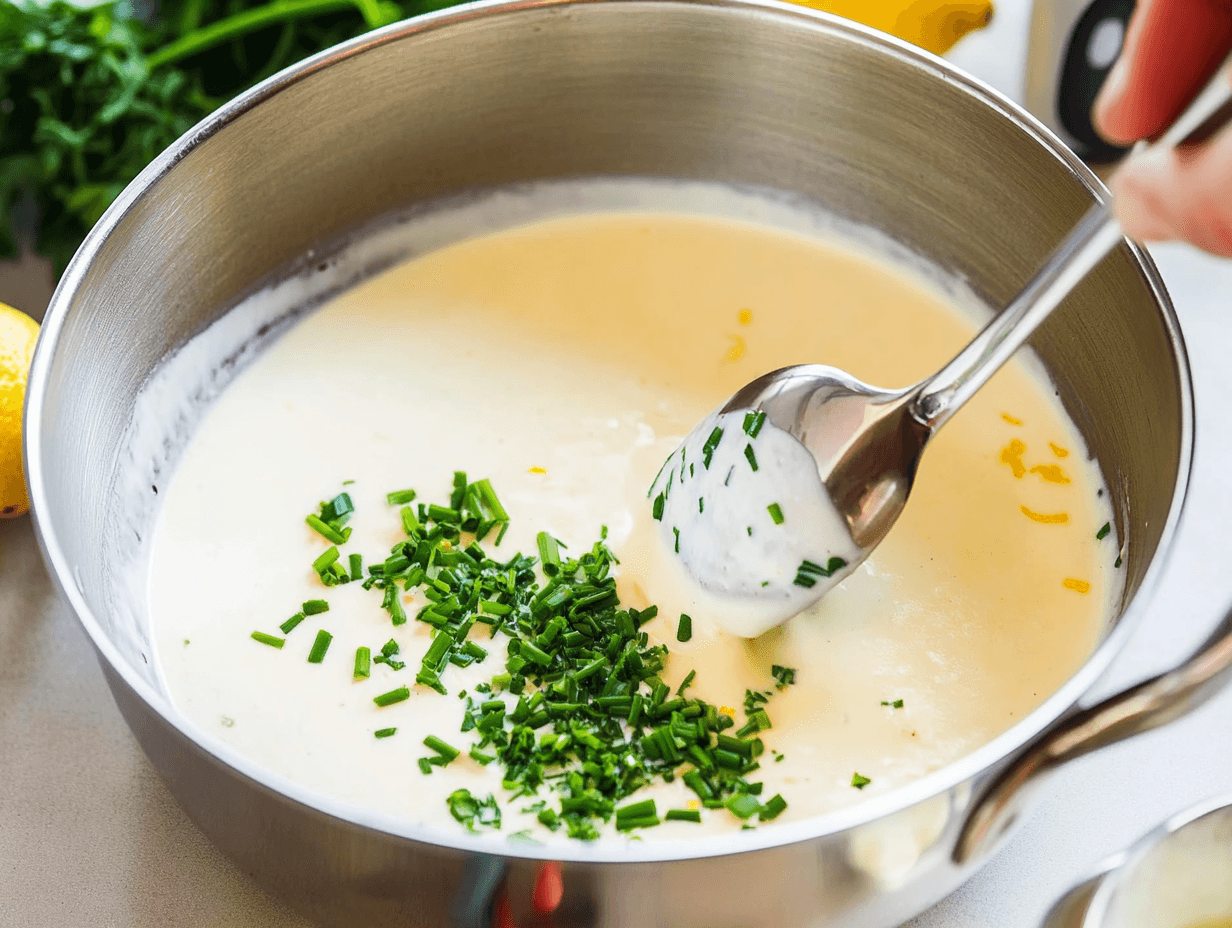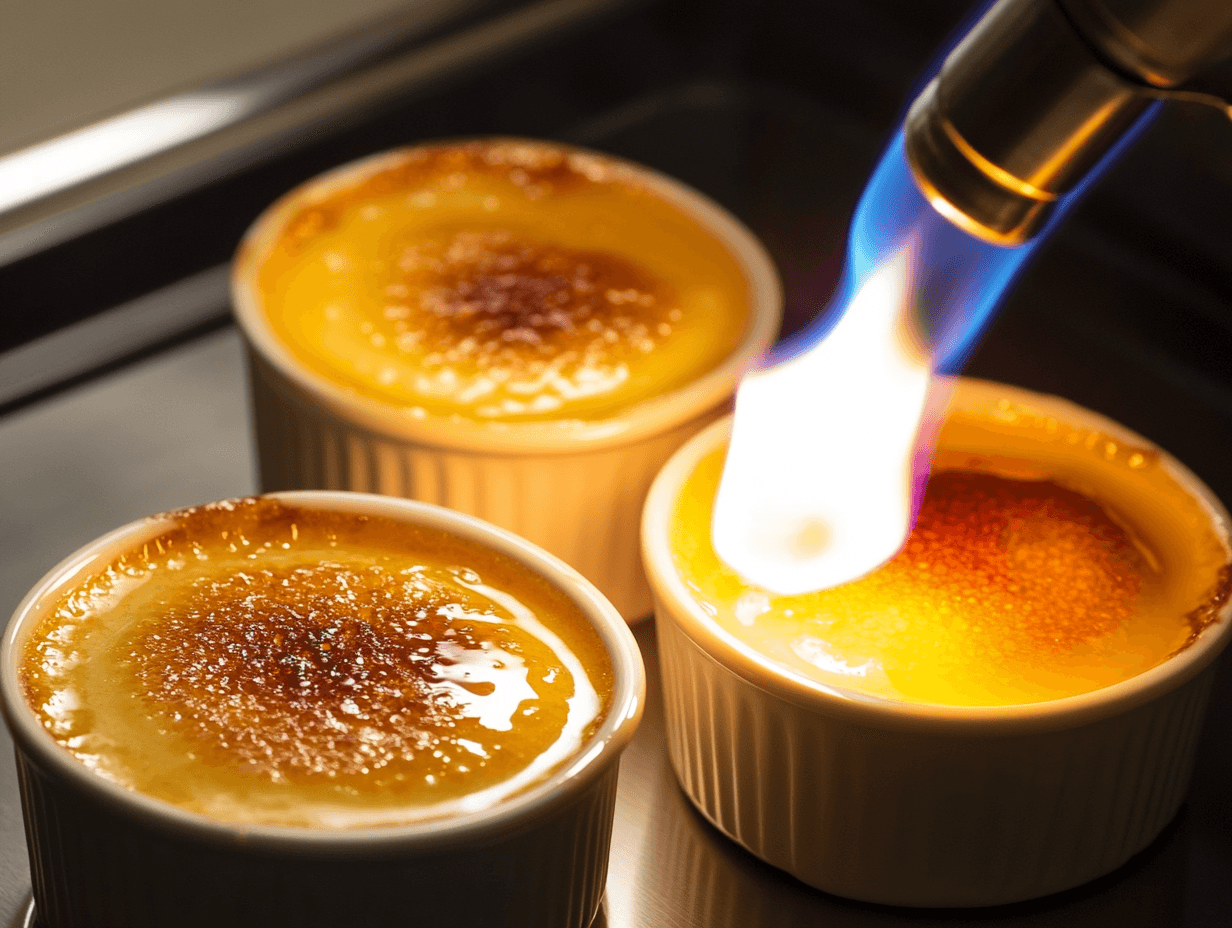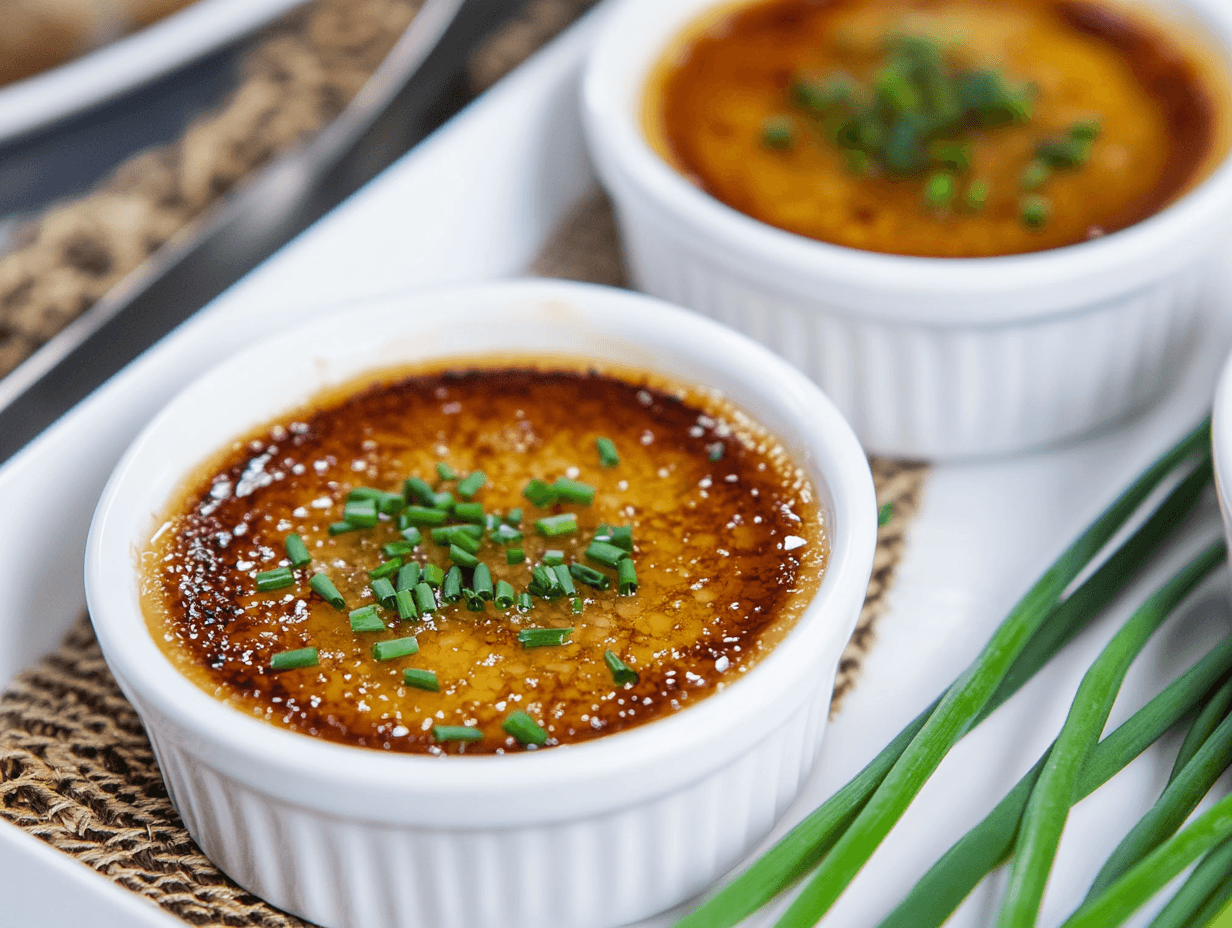Are you ready to elevate your seafood game and impress your dinner guests with a truly unique dish? Look no further than the exquisite Crab Brulee! This gourmet creation combines the sweetness of fresh crab meat with the rich, creamy texture of a classic crème brûlée, all topped with a perfectly caramelized sugar crust. Whether you’re a seasoned chef or an adventurous home cook, this recipe will undoubtedly take your culinary skills to new heights.
Why Crab Brulee Should Be Your Next Culinary Adventure
Unique Flavor Profile: Experience the perfect balance of sweet crab and savory custard.
Impressive Presentation: Wow your dinner guests with a restaurant-quality dish.
Versatile: Easily customizable to suit various dietary needs and preferences.
Nutrient-Rich: Packed with high-quality protein and essential vitamins from crab meat.
Make-Ahead Friendly: Prep in advance for stress-free entertaining.
The History and Origin of Crab Brulee
Before diving into the recipe, it’s worth exploring the origins of Crab Brulee. This dish is a prime example of fusion cuisine, combining the classic French dessert technique with the rich flavors of seafood. While the exact origin is unclear, it’s believed that Crab Brulee emerged in high-end restaurants in coastal France or New Orleans, where French culinary traditions meet fresh seafood.
This luxurious dish gained popularity in the late 20th century as chefs began experimenting with savory versions of traditionally sweet dishes. Building on the classic crème brûlée, which dates back to the 17th century, chefs replaced the sweet custard with a delicious crab mixture. The result is a dish that maintains the textural contrast of the original dessert, with a creamy base and a crisp, caramelized top.
Today, Crab Brulee is a staple in many fine dining establishments and is increasingly popular among home cooks.

Quick Recipe Overview
– Prep Time: 30 minutes
– Cook Time: 25 minutes
– Chill Time: 2 hours
– Total Time: 2 hours 55 minutes
– Servings: 4
– Calories: Approximately 350 per serving
– Skill Level: Intermediate
Choosing the Perfect Crab for Your Brulee
The success of your Crab Brulee depends on the quality of the crab meat you choose. Here’s a guide to help you select the best crab for this dish:
Types of Crab:
– Dungeness Crab: Sweet and tender, ideal for Crab Brulee.
– Blue Crab: Slightly stronger flavor, perfect for a more pronounced crab taste.
– King Crab: Luxurious option with large, succulent pieces.
– Snow Crab: Mild and slightly sweet, a good budget-friendly option.
Fresh vs. Canned:
– Fresh Crab Meat: Always preferable for its superior texture and flavor.
– Canned Crab Meat: High-quality canned lump crab meat can be a good substitute if fresh isn’t available.
Grades of Crab Meat:
– Jumbo Lump: Large pieces from the crab’s swimming fins, perfect for showcasing in Crab Brulee.
– Lump: Smaller pieces, still high quality and more affordable.
– Backfin: Broken pieces of lump meat, good for mixing into the custard.
– Claw Meat: Darker meat with a stronger flavor, can be mixed with a lump for added depth.
Sustainability:
Look for crab certified by the Marine Stewardship Council (MSC) to ensure it’s sustainably sourced.
Smell and Appearance:
Fresh crab should have a mild, oceanic smell and a moist appearance without any signs of drying or discoloration.
Ingredients: What You’ll Need for Perfect Crab Brulee
For the Crab Custard:
– 1 pound (450g) fresh crab meat, carefully picked and shell-free
– 1 cup (240ml) heavy cream
– 1/2 cup (120ml) whole milk
– 3 large egg yolks
– 1 whole large egg
– 1/4 cup (60g) crème fraîche
– 2 tablespoons finely chopped fresh chives
– 1 tablespoon Dijon mustard
– 1 teaspoon lemon zest
– 1/4 teaspoon cayenne pepper
– Salt and freshly ground black pepper to taste
For the Brulee Topping:
– 1/4 cup (50g) granulated sugar
Essential Equipment:
– 4 (6-ounce) ramekins
– Kitchen torch or oven broiler
– Fine-mesh strainer
– Water bath (large baking dish)
Detailed Ingredient Breakdown
Understanding each ingredient’s role in the Crab Brulee will help you appreciate the dish more and potentially customize it to your liking:
– Crab Meat: The star of the show, providing sweet, delicate flavor and tender texture.
– Heavy Cream: Creates the rich, velvety base of the custard.
– Whole Milk: Balances the heaviness of the cream while maintaining creaminess.
– Egg Yolks and Whole Egg: Act as emulsifiers and thickening agents, giving the custard its structure.
– Crème Fraîche: Adds tanginess and extra creaminess to the custard.
– Chives: Provide a mild onion flavor and a pop of color.
– Dijon Mustard: Adds a subtle tang and depth of flavor.
– Lemon Zest: Brightens the dish with citrusy notes, complementing the crab.
– Cayenne Pepper: Gives a gentle heat that enhances other flavors.
– Salt and Black Pepper: Essential for balancing and enhancing all the flavors.
– Granulated Sugar: Creates the signature caramelized crust.
Each ingredient plays a crucial role in creating the complex flavor profile and luxurious texture of Crab Brulee.
Step-by-Step Instructions: Crafting Your Crab Brulee
1. Prepare the Crab Meat
– Carefully inspect the crab meat for any shell fragments.
– Pat dry with paper towels to remove excess moisture.
– Refrigerate while preparing the custard base.

2. Create the Luscious Custard Base
– In a medium saucepan, combine heavy cream and milk.
– Heat until just simmering, then remove from heat.
– In a large bowl, whisk egg yolks, whole egg, and crème fraîche until smooth.
– Slowly pour the warm cream mixture into the egg mixture, whisking constantly.
– Strain through a fine-mesh strainer for ultimate smoothness.

3. Infuse with Flavors
– Stir in chives, Dijon mustard, lemon zest, and cayenne pepper.
– Season with salt and black pepper, remembering the crab’s natural saltiness.

4. Incorporate the Star Ingredient – Crab
– Gently fold the crab meat into the custard mixture.
– Divide evenly among four ramekins.

5. Bake to Perfection
– Preheat oven to 300°F (150°C).
– Place ramekins in a large baking dish.
– Fill the dish with hot water halfway up the ramekins’ sides.
– Bake for 25-30 minutes until set but slightly jiggly in the center.

6. Chill for Optimal Texture
– Cool ramekins to room temperature.
– Cover with plastic wrap and refrigerate for at least 2 hours or overnight.

7. Create the Signature Brulee Topping
– Sprinkle about 1 tablespoon of sugar evenly over each custard.
– Use a kitchen torch to caramelize the sugar, moving constantly to avoid burning.
– Alternatively, place under a preheated broiler for 2-3 minutes, watching carefully.

8. Serve and Enjoy
– Allow the caramelized sugar to harden for 1-2 minutes.
– Garnish with additional chives if desired.
– Serve immediately and savor the perfect blend of flavors and textures!

The Science Behind the Perfect Custard
Understanding the science behind custard-making can help you achieve the perfect texture for your Crab Brulee. Here’s what’s happening at a molecular level:
– Protein Coagulation: The proteins in the eggs start to coagulate (solidify) at around 144°F (62°C). This process gives the custard its structure.
– Fat Emulsion: The fat in the cream and crème fraîche emulsifies with the water content, creating a smooth, creamy texture.
– Starch Gelatinization: Any starch present in the crab meat will gelatinize, contributing to the overall texture.
– Maillard Reaction: When you caramelize the sugar topping, you’re initiating the Maillard reaction, which creates complex flavors and a characteristic brown color.
– Slow Cooking: The water bath (bain-marie) method ensures gentle, even heating, preventing the eggs from curdling and ensuring a silky-smooth custard.
Understanding these processes can help you troubleshoot if things go wrong and appreciate the complexity of this seemingly simple dish.
Mastering the Caramelization Technique
The crisp, caramelized top is what sets a brulee apart. Here’s how to perfect this crucial step:
– Sugar Selection: Use superfine sugar for the most even caramelization.
– Even Distribution: Sprinkle the sugar evenly over the custard to avoid hotspots.
– Torch Technique: Keep the flame moving in small circles to control the browning.
– Broiler Method: If using a broiler, keep a close eye to avoid burning and rotate the ramekins as needed.
– Cooling: Allow the sugar to cool and harden for a minute or two before serving for the perfect contrast between the crisp top and creamy custard.
Serving Suggestions: Making Your Crab Brulee a Star
Crab Brulee is a luxurious dish that deserves equally elegant accompaniments. Here are some ideas to elevate your dining experience:
Accompaniments:
– Light Mixed Green Salad: Toss with a citrus vinaigrette for a refreshing contrast.
– Thin, Crispy Crostini: Serve alongside for a crunchy textural contrast.
– Lemon Aioli: A dollop on the side adds a zesty richness.
FAQs: All You Need to Know About Crab Brulee
Q: Can I use frozen crab meat for Crab Brulee?
A: Yes, you can use frozen crab meat, but ensure it’s fully thawed and drained to prevent excess moisture from affecting the custard’s texture.
Q: What’s the best way to store leftover Crab Brulee?
A: Store leftover Crab Brulee in the refrigerator, covered with plastic wrap. It’s best consumed within 1-2 days. Re-caramelize the top before serving if needed.
Q: Can I make Crab Brulee in advance?
A: Yes, Crab Brulee can be made a day ahead and stored in the refrigerator. Caramelize the sugar topping just before serving for the best texture.
Q: How do I prevent the custard from curdling?
A: To prevent curdling, bake the custard in a water bath at a low temperature (300°F or 150°C) and monitor closely. The custard should be set but still slightly jiggly in the center when done.
Q: Can I make this dish dairy-free?
A: Yes, you can substitute the cream and milk with coconut milk or another non-dairy alternative. Keep in mind this will alter the flavor profile slightly.
Q: Is Crab Brulee gluten-free?
A: Yes, this recipe is naturally gluten-free, making it suitable for those with gluten sensitivities.
Q: How do I know when the custard is done?
A: The custard is done when it’s set around the edges but still has a slight jiggle in the center. It will firm up as it cools.
Q: What’s the best way to serve Crab Brulee?
A: Serve Crab Brulee immediately after caramelizing the sugar topping for the best textural contrast. Pair it with a light salad or crisp wine to enhance the experience.
Conclusion
Crab Brulee is a dish that combines elegance, flavor, and texture in every bite. By following this guide, you’ll master the art of crafting this exquisite seafood delight, sure to impress even the most discerning palate. Whether you’re making it for a special occasion or simply to treat yourself, Crab Brulee is a culinary experience that’s as rewarding to make as it is to eat. With the tips and insights provided, you’re well on your way to creating a restaurant-quality dish in the comfort of your kitchen. Happy cooking!
